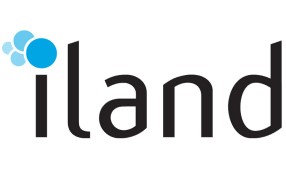
Digital transformation has been the leading edge for many businesses trying to become more agile and competitive. However, many businesses have not yet fully embraced the potential of the cloud. This is despite the fact that owning and running physical servers and data centres is comparatively more expensive costly and requires considerable effort to maintain.
The cloud is the way forward, but are some companies reluctant to go for digital transformation?
Making the cloud the core of your digital business
One of the reasons for delaying a move to the cloud is an ongoing attachment to on-premises data centres. It takes time to build data centres. Many companies continue to add capacity as they run out of compute power for their workloads. In some respects, this is the path of least resistance. But there comes a point when companies need to ask if adding capacity to on-premise infrastructure is the right thing to do? The corporate data centre is the biggest source of pain but also probably the biggest source of investment too.
Moving workloads and applications to the cloud, especially in heavily regulated industries, requires caution. But leaving everything on-premises and creating or supporting a private cloud infrastructure, requires ongoing OPEX costs and onsite equipment to maintain and cool.
While many enterprises have adopted VMware in their on-premises infrastructure, not all have fully embraced the cloud for all their applications. When moving to the cloud, organizations have many options to help concentrate their efforts on digital transformation.
Developing an enterprise on VMware means it can be a logical move to port such applications to a cloud environment. Many don’t realise that the cloud enables them to be in complete control of the applications while gaining operational efficiencies. This allows the firm to focus further up the stack.
Organizations have looked upon cloud migration as either keeping some things on-premises as a private cloud, or moving other things onto the cloud. Keeping a leg in both environments can helpful, but this raises other issues. Can workloads in private clouds talk to ones in the public cloud? Can workloads on different public clouds talk to each other.
This can be complex, so can we make the migration seamless?
Virtualisation is key to migration
Virtualization is essential to digital transformation and migrating workloads into the cloud. Moving such workloads becomes easier when the hypervisor in the on-premises infrastructure is the same as the one on the public cloud.
Moving VMware workloads from on-premises to a cloud can be easy when the destination is also VMware-based. It can be a different story when it comes to moving to Azure or Amazon. It often needs the help of expensive consultants to figure out not just the networking, storage and compute size, but also the cost, as this can be opaque.
This can hold cloud migration projects back and stifle innovation. Spending time configuring workloads means businesses have slower speed to market. Uncertainty about costs also acts as a brake on project delivery. It is important to select the right cloud destination, one that can support existing workloads and a straightforward, uncomplicated migration process.
Popular paths to cloud migration
Once the decision to move to the cloud has been made, there are a number of paths that a business can choose.
- Rehosting: Also referred to as “lift and shift,” it is the simplest way of moving to the cloud. Applications are simply re-hosted in the cloud, and code copied to the new environment without any changes.
- Replatform: Code is migrated to the cloud and updated to meet the requirements of the new infrastructure.
- Refactoring: This is a more complicated method of migration. The application’s architecture is completely reconstructed. The code is also rewritten to ensure it can operate in the new cloud environment.
Getting up to speed
Digital transformation is now top of mind for virtually every CIO as the cloud has a marked effect on how business operations are arranged. CIOs have to ensure that the technology they buy into produces a return on investment and improves performance. Cloud is vital in building a digital-ready infrastructure. It allows business to build rapidly, run more quickly and work anywhere.
Businesses survive by being agile and getting new solutions to market. Having to provision infrastructure is another overhead to deal with in terms of cost, management and timing.
A cloud hosting solution that makes cloud migration as easy as pressing a button and moving a workload onto a familiar platform can take the risk out of an enterprise’s digital transformation. It also leaves them with all the options, they need in a multi-cloud future.
iland is a global cloud service provider of secure and compliant hosting for infrastructure (IaaS), disaster recovery (DRaaS), and backup as a service (BaaS). It is recognised by industry analysts as a leader in disaster recovery. The award-winning iland Secure Cloud Console natively combines deep layered security, predictive analytics and compliance to deliver unmatched visibility and ease of management for all of iland’s cloud services. Headquartered in Houston, Texas and London, UK, iland delivers cloud services from its data centres throughout the Americas, Europe, Australia and Asia.


























